Research
Fields and areas
Below, you see an informal and non-optimally arranged tree of fields of expertise and knowledge areas where I get involved with:
- Fluid Mechanics
- Multiphase Flows
- Computational Fluid Dynamics
- Scientific Computing
- Computer Programming
- Symbolic Computing
- Mathematical Modelling
- Reservoir Modelling
- Data Science
- Numerical Methods
- Finite Elements
- Intelligent Systems
- Pattern Recognition
- Artificial Intelligence
Reviewer for
- MDPI - Processes
- Scientific Reports - Springer Nature
- International Communications in Heat and Mass Transfer
- Advances in Geo-Energy Research
- Advanced Theory and Simulations
- Earth Science Informatics
- International Journal of Multiphase Flow
- Journal of King Saud University - Science
- Geoenergy Science and Engineering (former Journal of Petroleum Science and Engineering)
- Journal of the Brazilian Society of Mechanical Sciences and Engineering
- Natural Resources Research
- Plos One
- Trends in Computational and Applied Mathematics
Portfolio
Below are a few cards highlighting the key themes that make up my research portfolio. Many of these topics appear in my publications, though sometimes under different terms. Others reflect ongoing or unpublished work. The cards are arranged in rough chronological order, starting from the bottom right and flowing upward in an “S” shape to the top left.

Peak (P) and off-peak (OP) time series of the electricity mix composition for energy supply at HULW/UFPB (top), and decomposed emissions per source (bottom) in kgCO2e units.
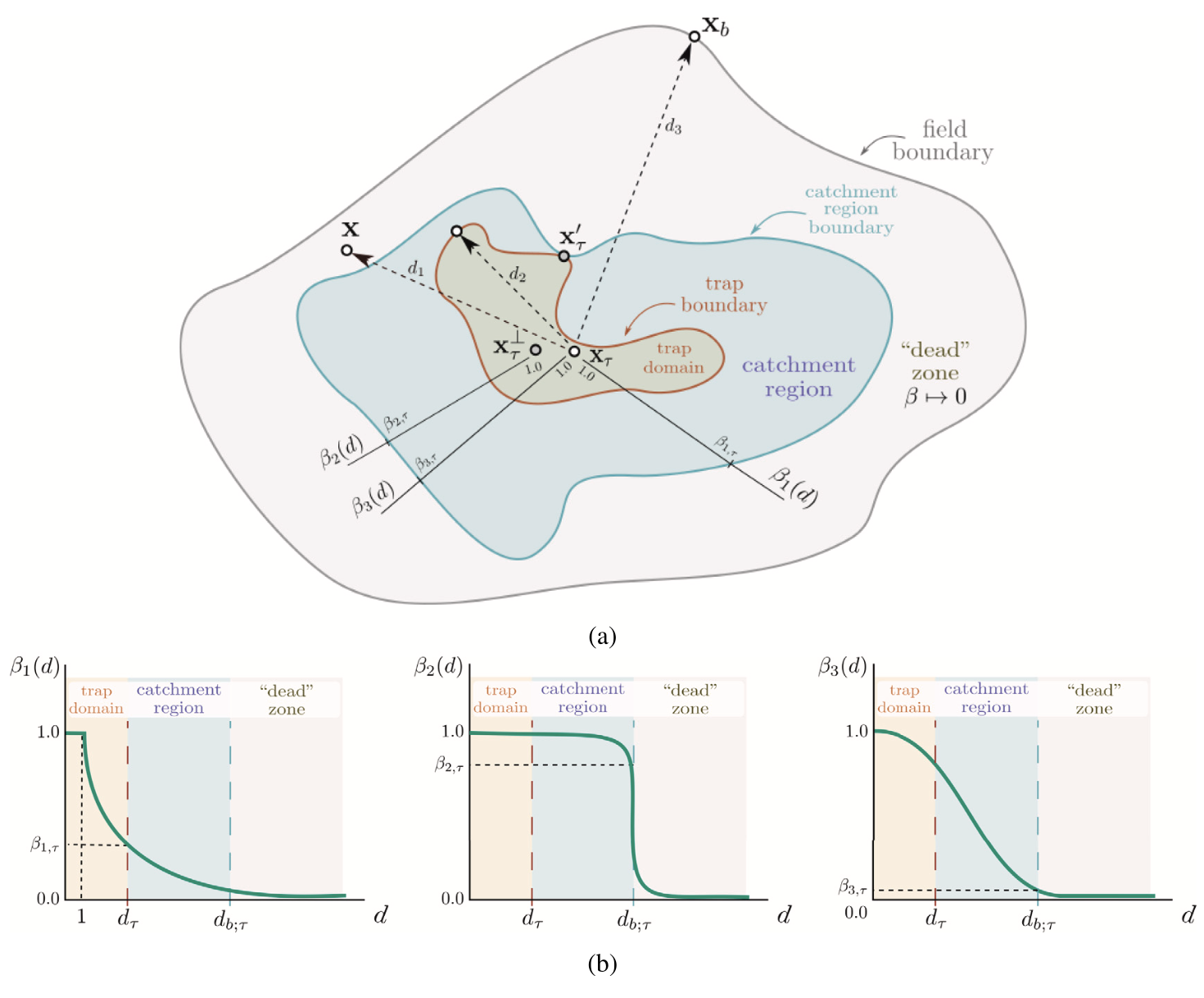
A distance-to-trap function is designed to locally weight the quality of a storage site. It provides an effective means of assigning relevance scores to areas surrounding a geological trap, making it particularly useful during the site screening and selection phases of geological carbon storage (GCS) protocols.
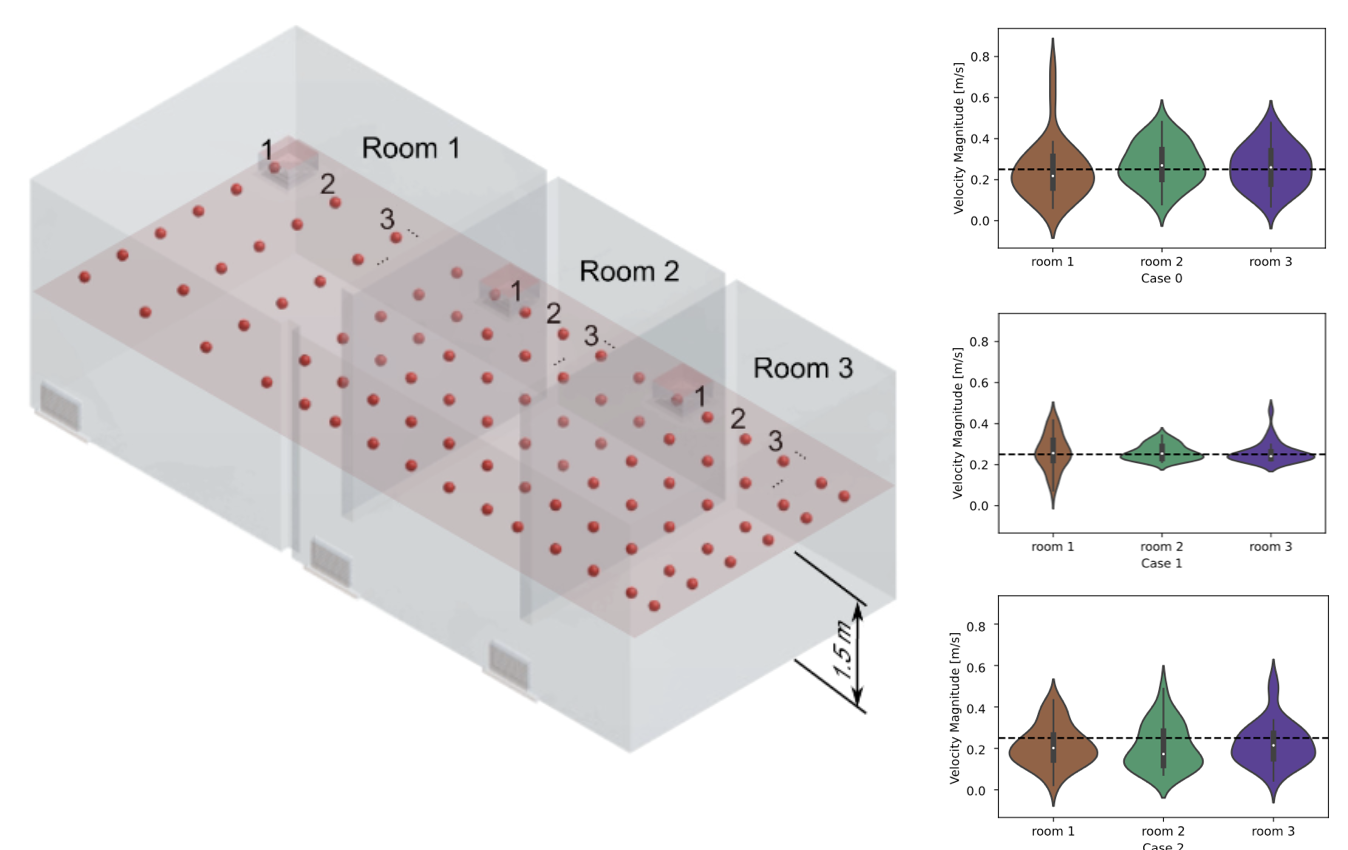
This figure illustrates a horizontal cross-section through the rooms of a healthcare unit. Uniformly spaced sampling points are distributed across each compartment to collect data at a height of 1.5 meters above the floor - the reference level required by Brazilian ANVISA regulations for evaluating the velocity field.
Violin plots depict the distribution density of air velocity for three scenarios: no filtering, and the use of 1-inch and 2-inch MERV-13 filters integrated into the air-conditioning system as contaminant control measures.
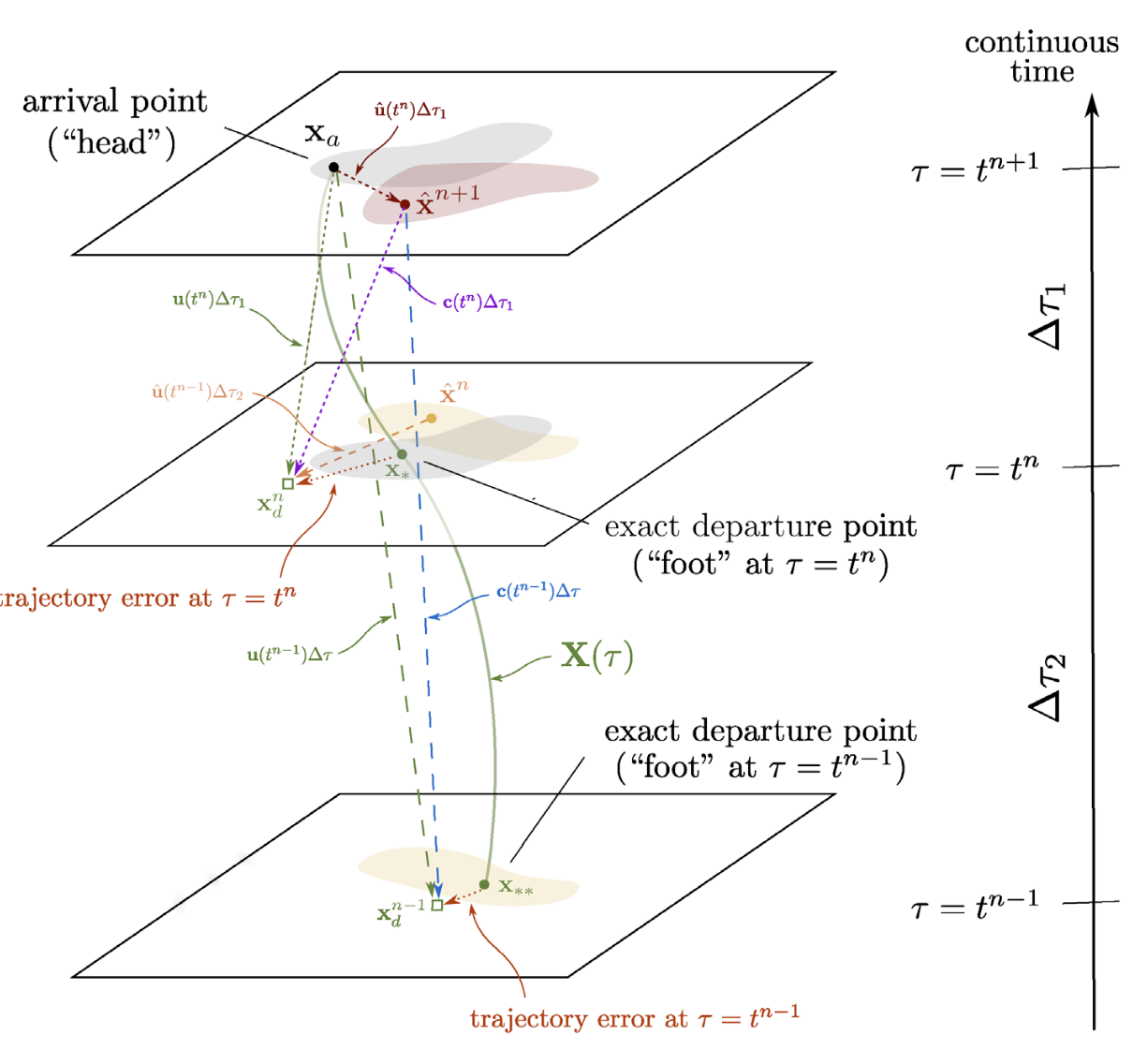
Space-time representation of a second-order semi-lagrangian scheme to describe fluid particles modeled in the context of the ALE/FE method. [Partnership with Dr. Gustavo Anjos.]
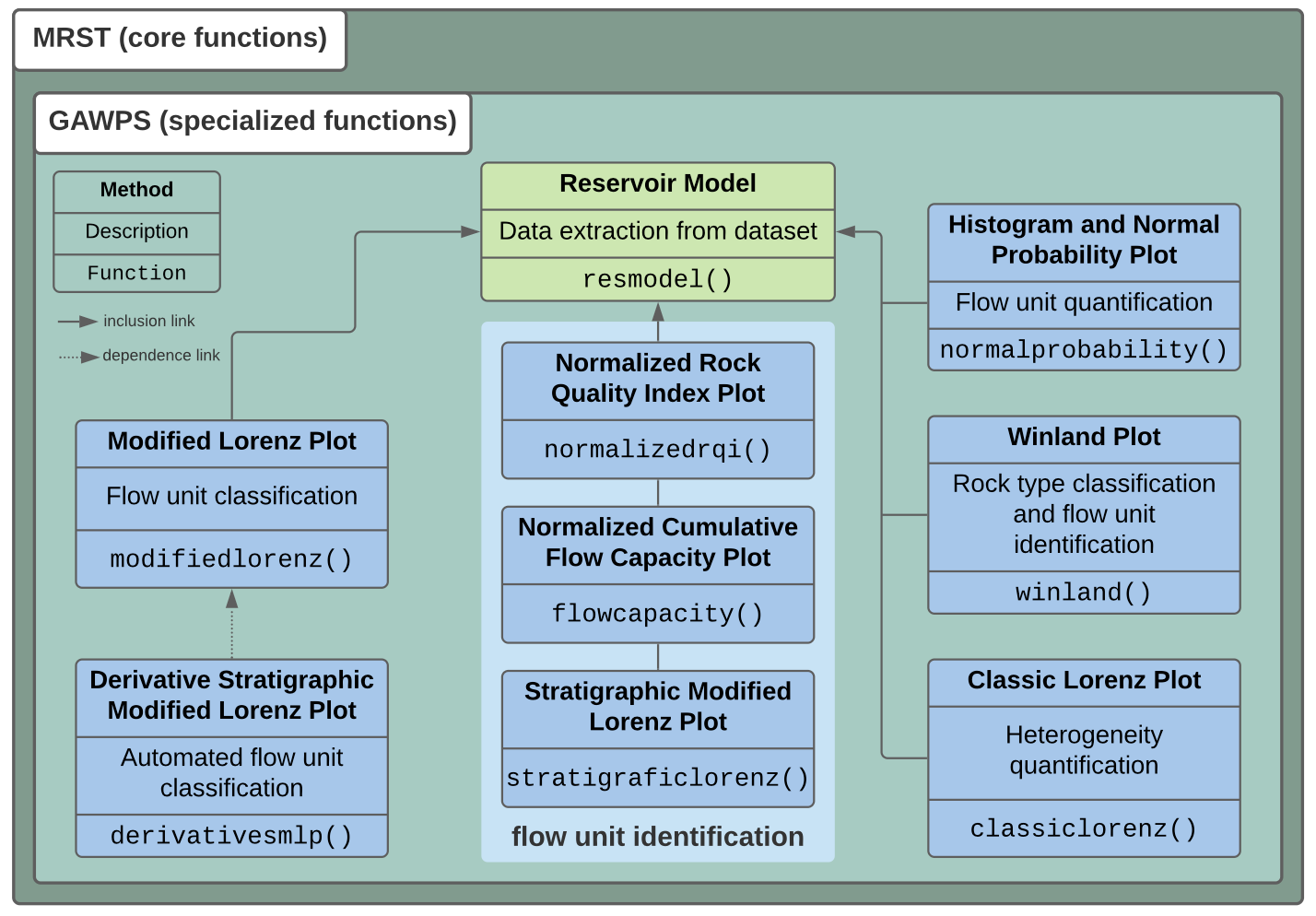
Overview of computational routines designed for GAWPS (Graphical Analysis for Well Placement Strategy), a plug-in module for the MRST software. GAWPS is useful for well profiling and educational purposes.

Cross section of a porous medium water-agar beads (experiment by Wu et al., 2016) and OpenCV-based edge extraction to compose the grain and pore regions, respectively.
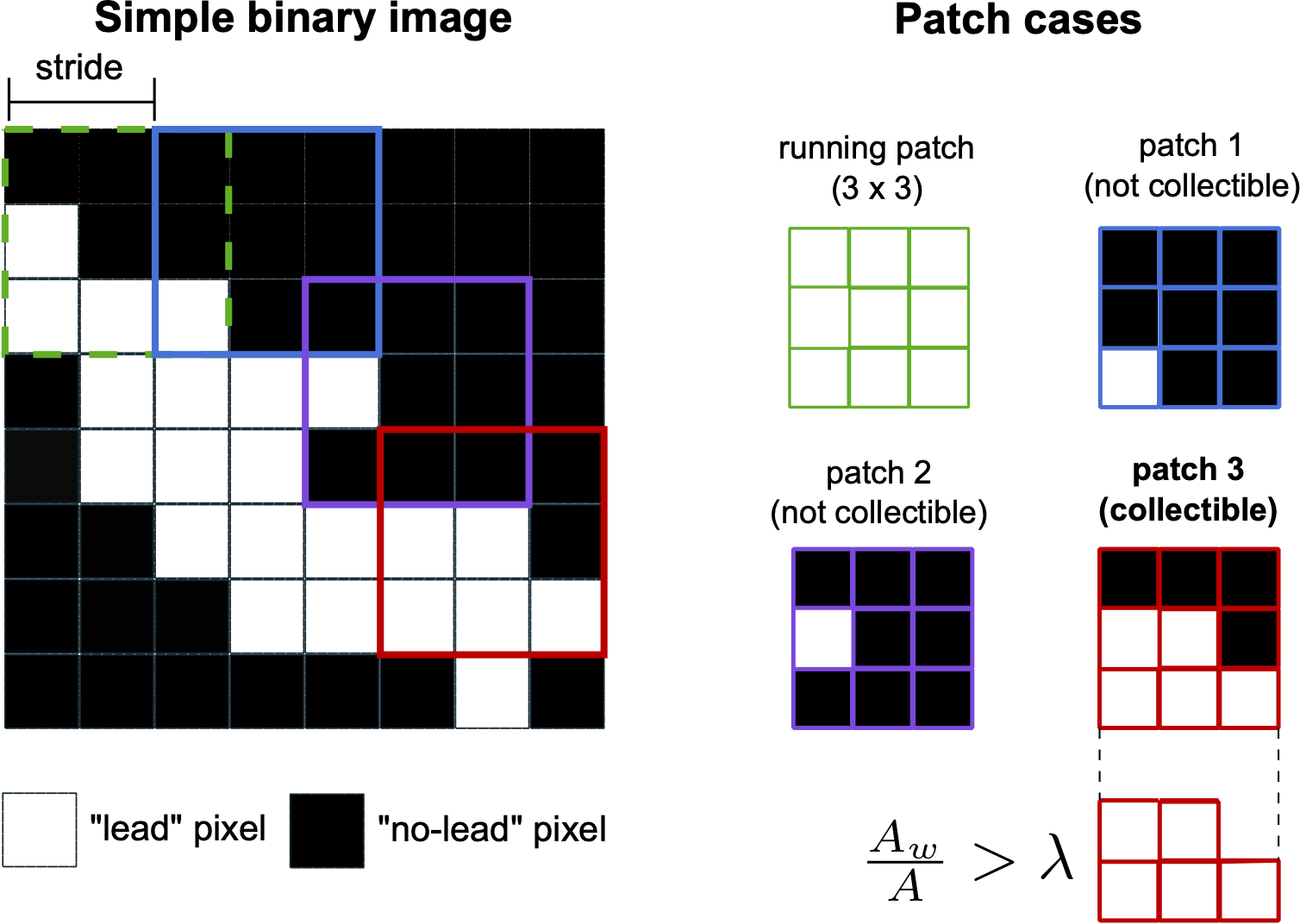
Process of patch generation from a simple binary image and a 3x3 patch model running with stride of 2. New image patches (subimages) are collectible to form a larger patch bank used for training of convolutional neural networks (CNNs) only if the area of white pixels (lead region) overlaps the running patch area by a proportion defined as "lead-pixel local area". In this example, two (blue and purple) of the three patches are non-collectible and one of them is collectible (red). Finally, the CNN is implemented for pattern recognition in seismic images.

This scheme is an abstract conceptualization of a completion strategy for petroleum reservoirs ocurring at a small domain. An irregular "5-spot" well pattern is formed from injector wells (red and blue) that surround a single producer well (black). The perforation cells are obtained from "anchor points" determined after an elipsoid-fitting algorithm.

This figure shows partially oil-filled flow unit models nearby an idealized flat oil-water contact horizon. Here, flow units are identified as volumes of the reservoir rock endowed with good fluid flow properties that share oil- and water-saturated zones. In discrete terms, these volumes are formed by clusters of cells connected according to a Moore's neighborhood criterion.
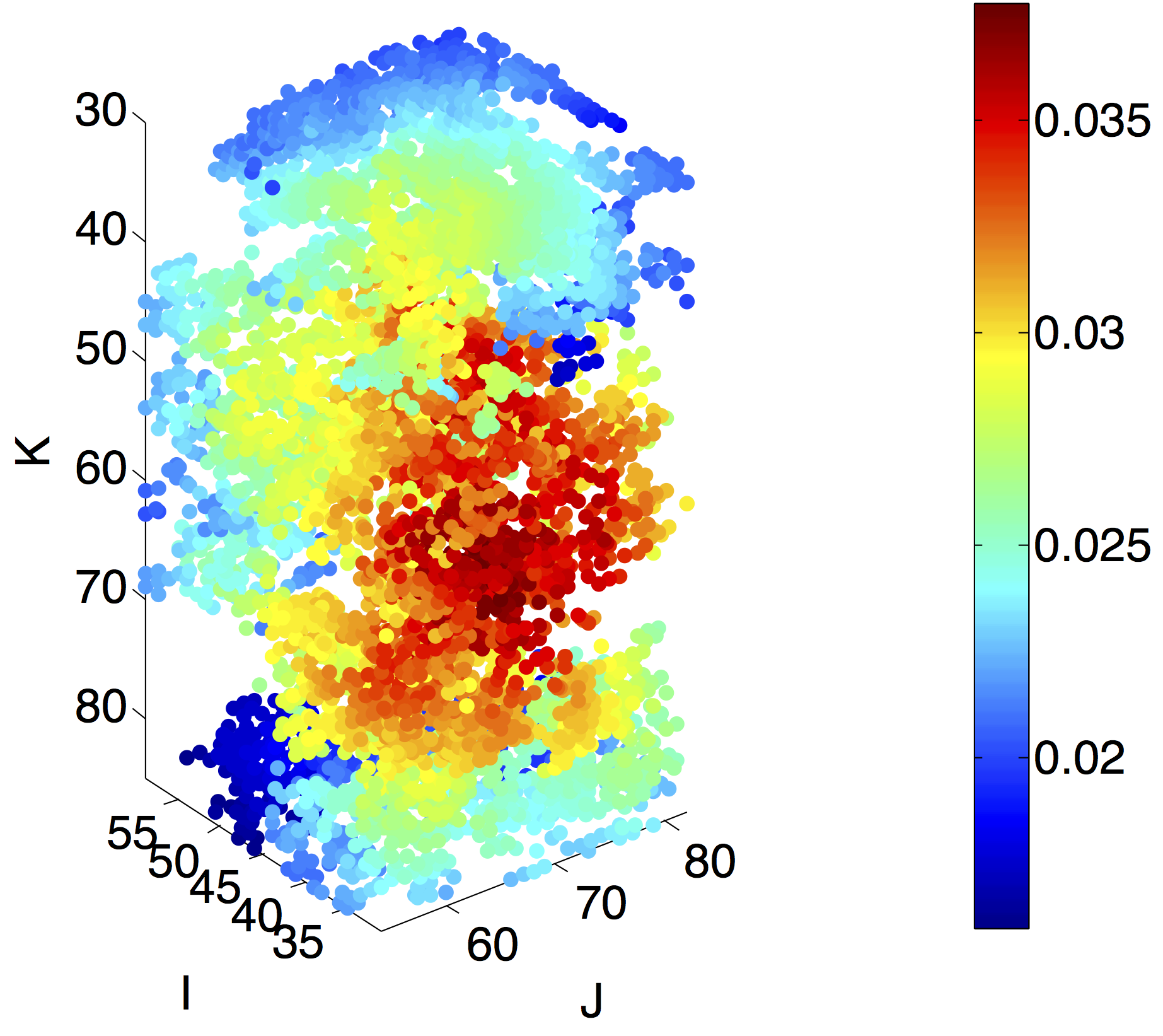
This figure is a "spot" of values that classify the local regions inside a petroleum reservoir as being of higher or lower consideration to implement well placement strategies for oil recovery. The red points make up a volume where the mathematical property stands out, thus suggesting that it is a region to be considered for production analysis.
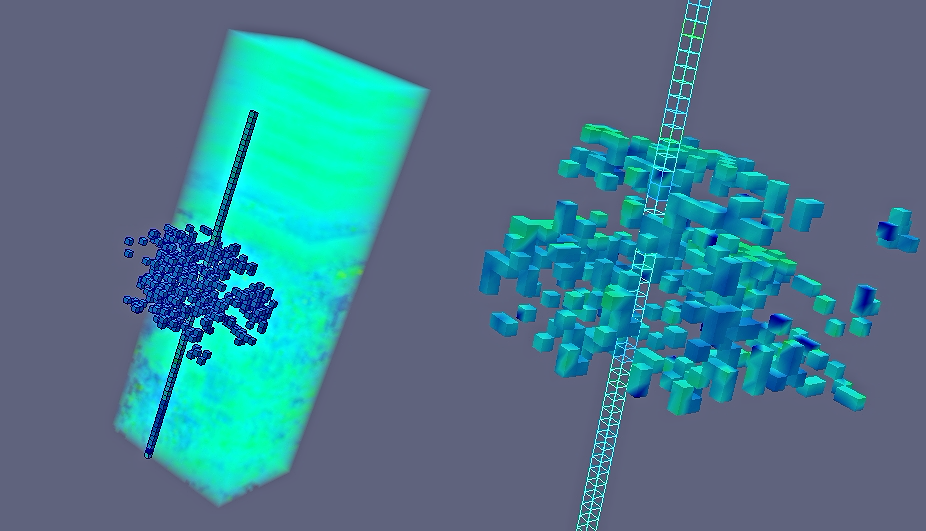
This is a 3D voxel representation of an oil well along with a neighbour set of discrete rocks. In the background, there is a portion of the reservoir field depicting its characteristics with the depth. (Based on the SPE10 model)

This is a highly connected structure of a trabecular bone meshed with tetrahedral elements for material response in stress-strain analyses.
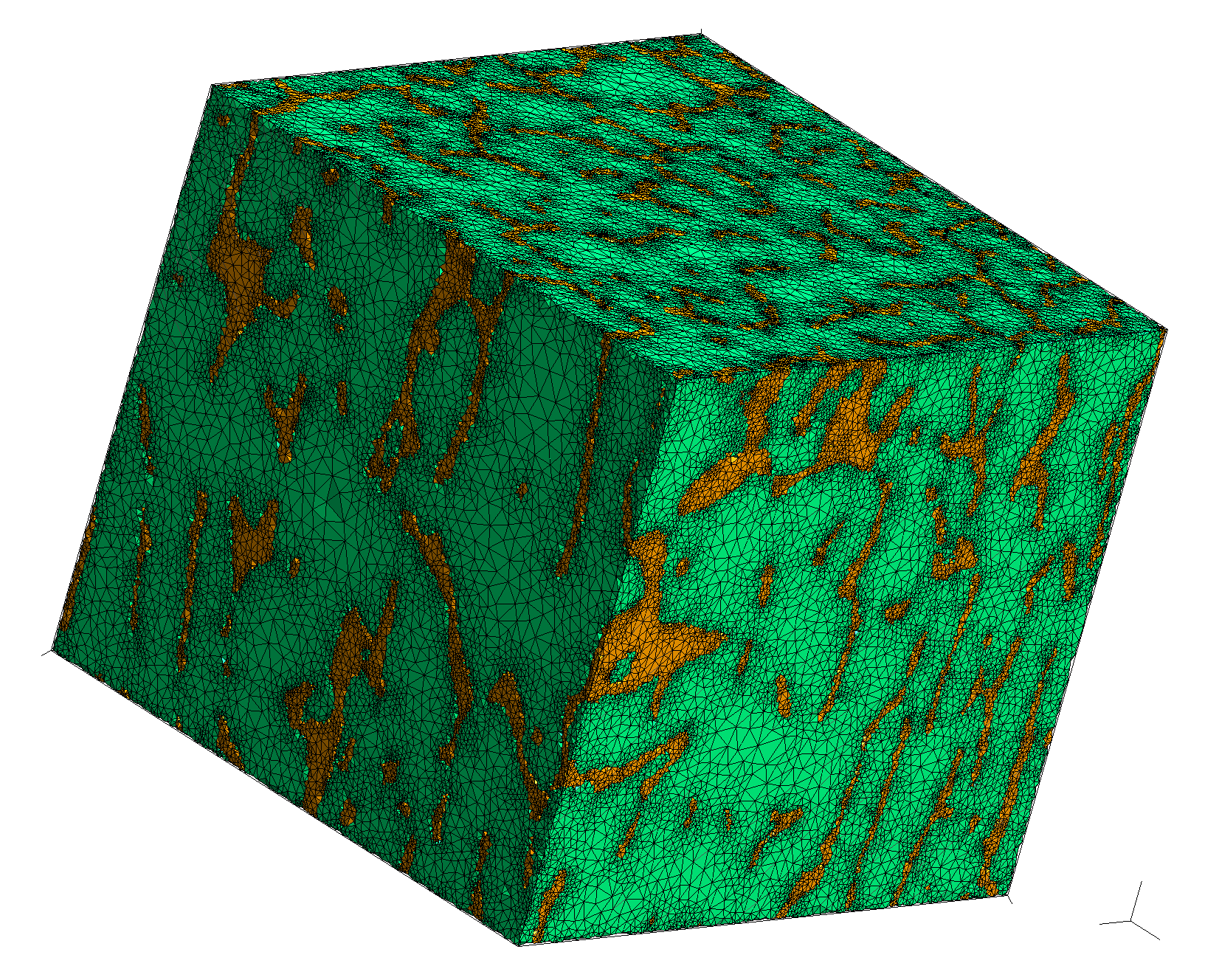
Finite element mesh of a Representative Elementary Volume of the porous region made up by cancellous bone/bone marrow interface of a healthy subject.
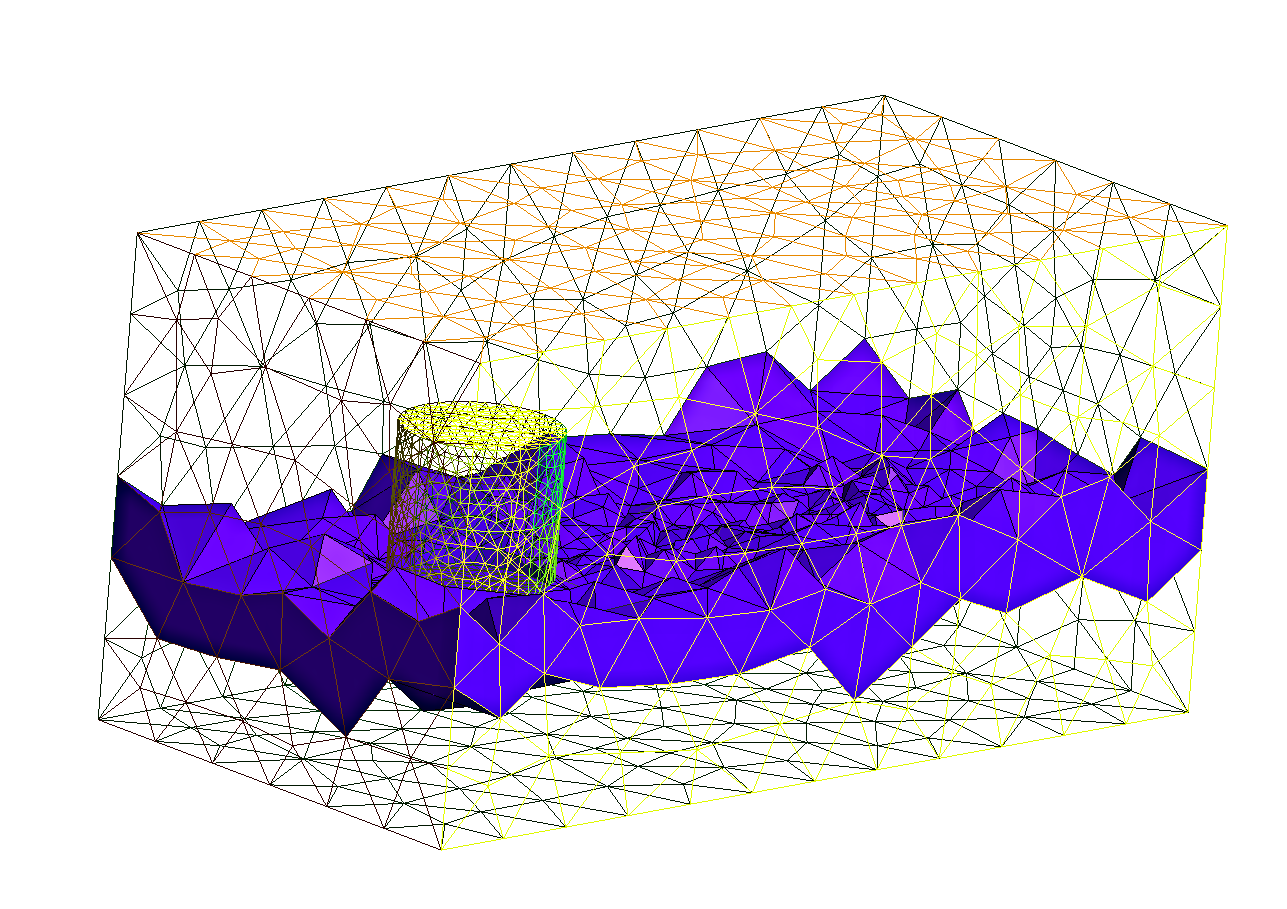
This 3D domain was developed to study boundary-layer detachment and wake effects stemming from the classical past cylinder flow. Refinement zones are placed over, around and ahead of the obstacle. (Designed for Eng. Welington Coelho)
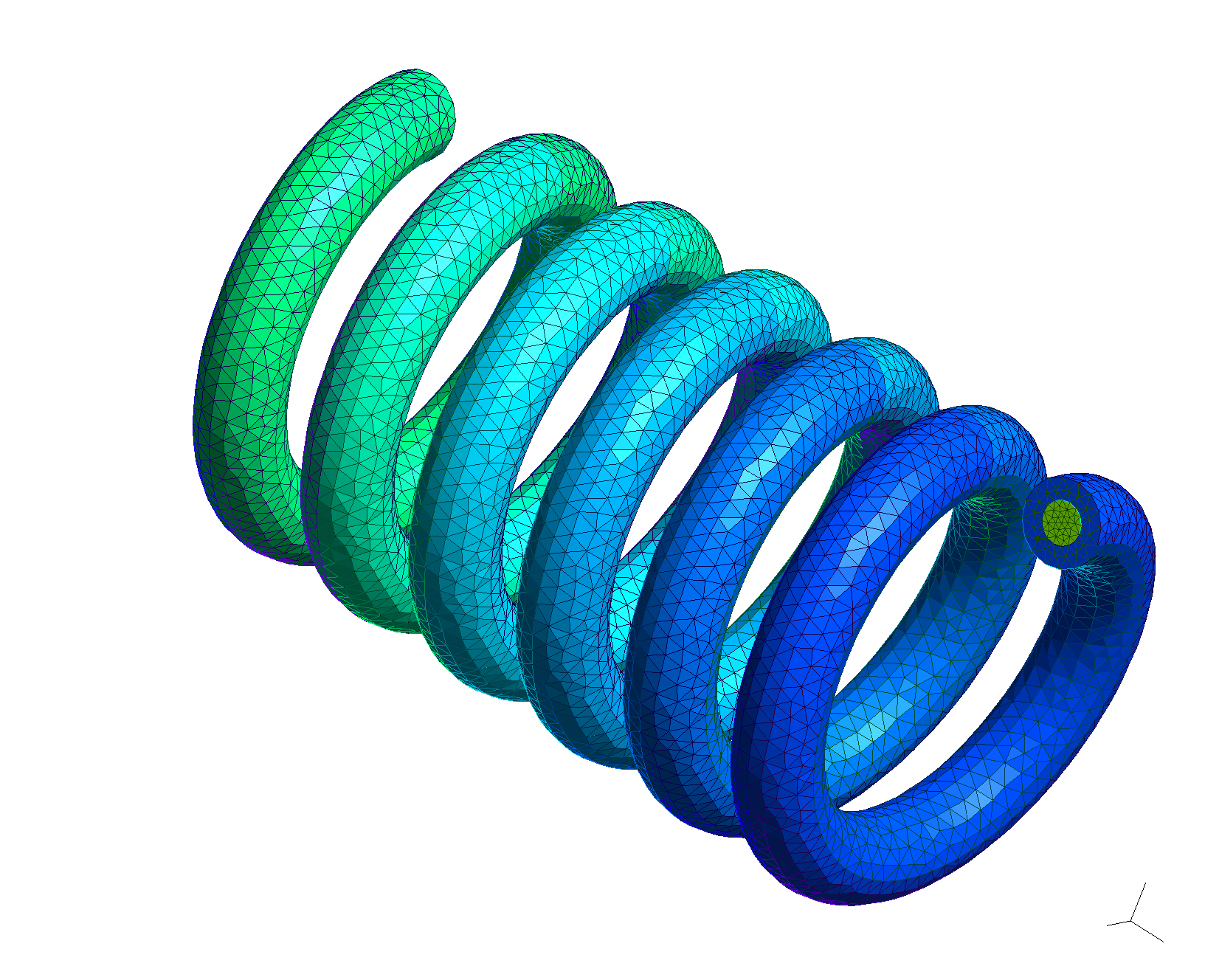
This is a tube coil model designed for heat exchange applications in which the fluid flows through the inner region of the tube while its outer region is subject to a heat flux. (Designed for Eng. Welington Coelho)
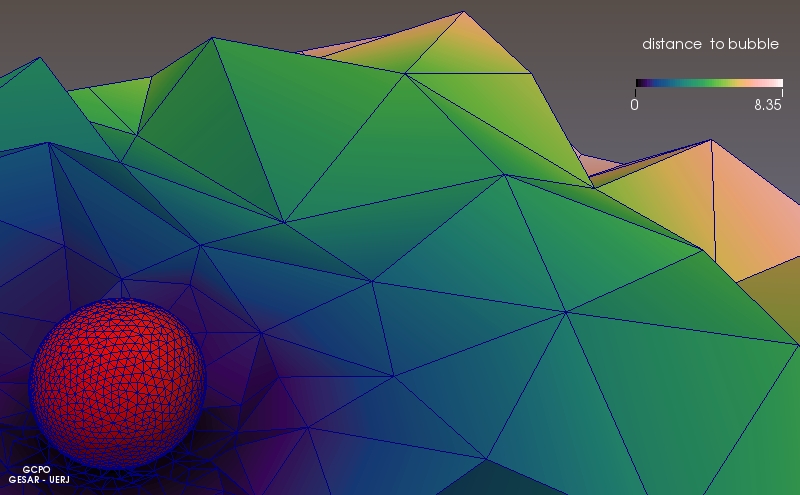
This picture shows a spherical bubble model immersed into a large continuum. Far from the bubble's nearby interaction region, the finite element mesh is designed coarser than the interface's so as to avoid additional computational efforts.
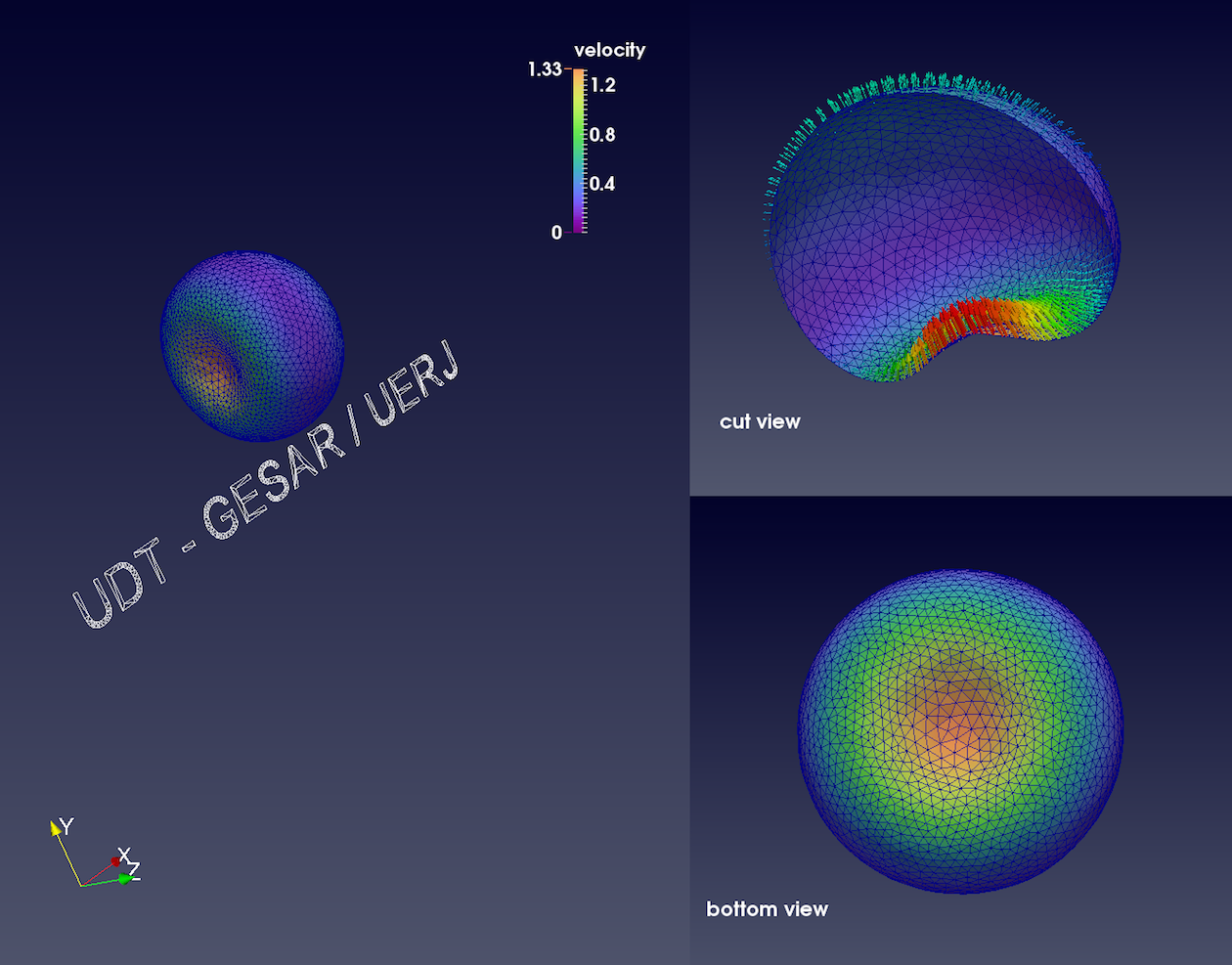
On this triplex screen, different views of a spherical air bubble model are observed. In this simulation, the bubble rises immersed into a sugar syrup solution by action of a pressure gradient from below, which pushes up the gas mass. The views single out a slight "dimple-like" deformation after some time of the upward movement.
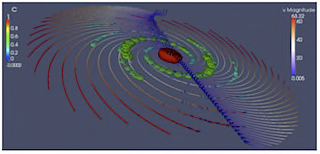
This snapshot is a frame of the simulation of a 3D simulation of a rotating disk flow displaying two fields overlapped.
The velocity field is observed by the streamlines varying from blue to red, descending from the top to the borders. Notably, the points of higher velocity occur at the brims of the circle in accordance to the centrifugal effects.
On the other hand, the dissolution of the scalar field is represented by hoops which spread outward the central core.
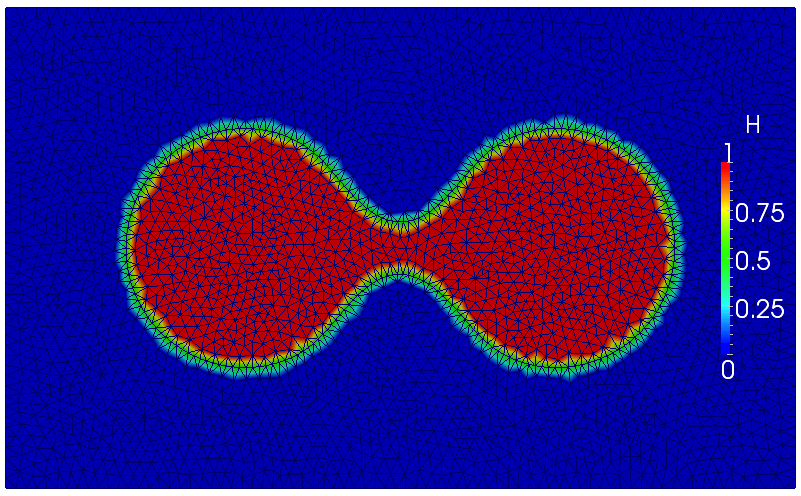
Here, the evolution of a two-phase model for two coalesced vapor bubbles immersed in a liquid continuum is studied. A Heaviside function marks the internal and external phases.
The target is to perform verification steps for the numerical code as to its capability to deal with severe topological changes.
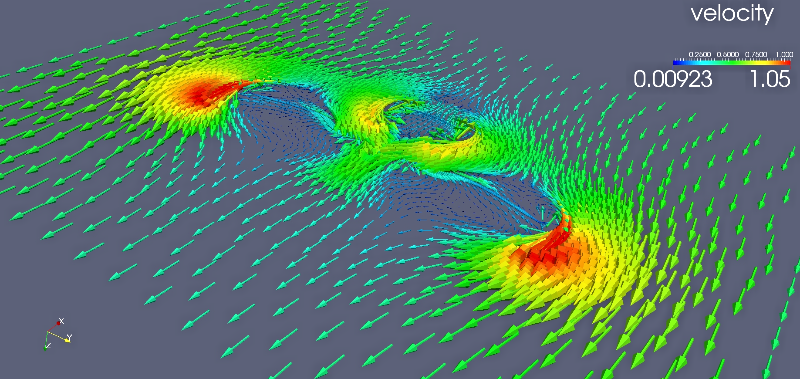
This simulation test considers a cluster of three bubbles arranged in arc traveling amidst a contrary liquid stream. The leading bubble goes above two trailing bubbles placed side-by-side. The wake interaction of the leading bubble over the others is observed in this velocity field.
Regions of high velocity gradients appear at the outermost lateral tips due to interface deformation. Such configuration looks like the V-flight of birds, air streams, and shedding of wingtip vortices.

Idem explanation for tile 1.
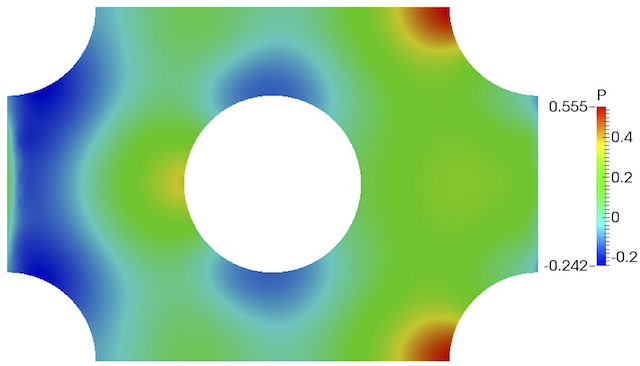
Streamwise velocity field of a fluid passing through a hexagonally-shaped periodic domain.
In this kind of simulations, we seek to analyze the fluid flow locally, since the unit cell repeats spatially as a tiling, or mosaic structure. Such geometry simplifies the uniform flow of a fluid hitting pillars or cylindrical structures.
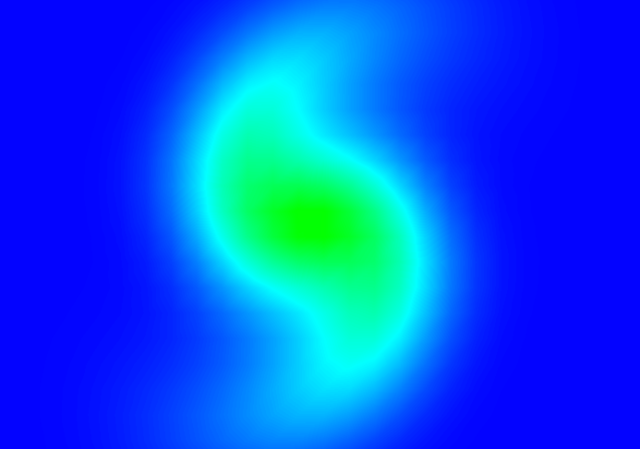
This image comes from a 2D simulation of the evolution of a Lamb-Oseen vortex transporting a scalar field. The vortex turns in the counterclockwise direction forming a pictorial letter "S".

This is an inner overview of a FE mesh used to simulate the boundary layer of concentration of a chemical species at the lower region of a disk.
On the focus, the thin boundary layer comes up in contrast to a exponential distribution of points along the axial direction of the disk.

Plot of spiral-like disturbances of the scalar field of a chemical species taken after post-processing of a simulation of a rotating disk flow according to T. von Kármán's solution.
The cut plane is perpendicular to the axial direction of a discoid geometry near to its lower limit where more intense centrifugal effects take place.
With this finite element simulation, the effects of the dissolution of electrodes in electrochemical cells containing a H2SO4 solution were investigated.